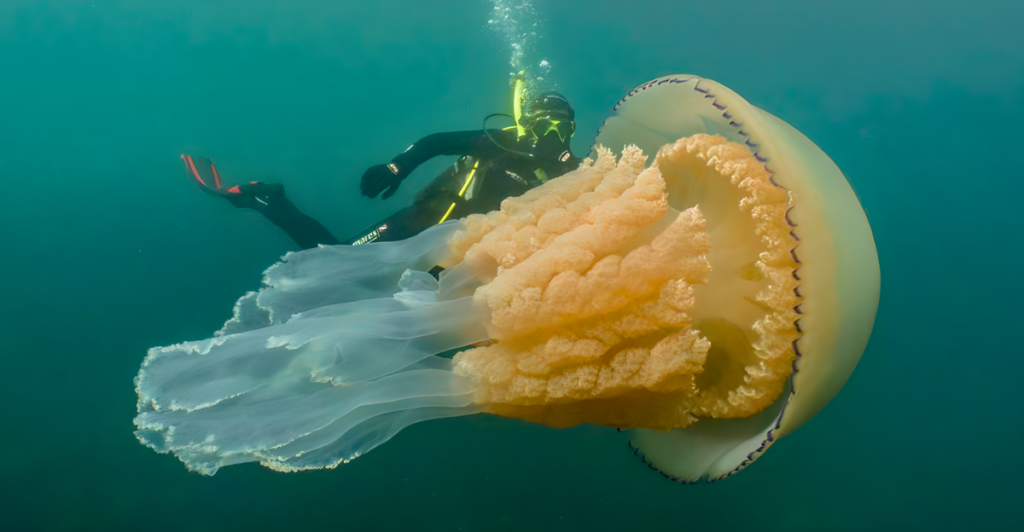
In the shadowy depths of our oceans resides a creature so elusive that its very existence borders on myth—the giant phantom jellyfish (Stygiomedusa gigantea). With a bell measuring over 3.3 feet (1 meter) in diameter and four ribbon-like oral arms extending up to 33 feet (10 meters), this enigmatic being drifts silently through the abyss, rarely revealing itself to human eyes. Since its initial description in 1910, there have been only about 126 confirmed sightings, underscoring its rarity and the mysteries it holds.
A Recent Sighting
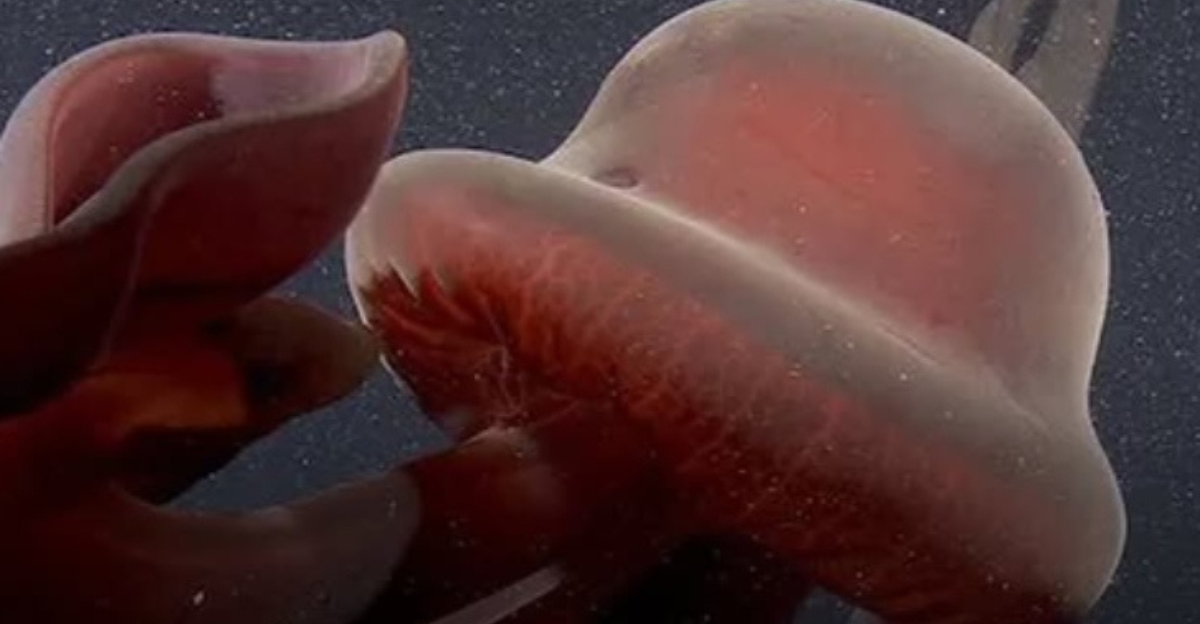
Recent observations have begun to shed light on the giant phantom jellyfish’s enigmatic existence. In 2022, researchers documented three separate encounters with this species during submersible expeditions in Antarctic waters. These sightings, captured on video and in photographs, revealed the jellies swimming at depths between 260 and 920 feet (80 to 280 meters), significantly shallower than their typical habitat. This unexpected behavior has prompted scientists to reconsider their understanding of the species’ ecological preferences and distribution.
A Deep-Sea Enigma
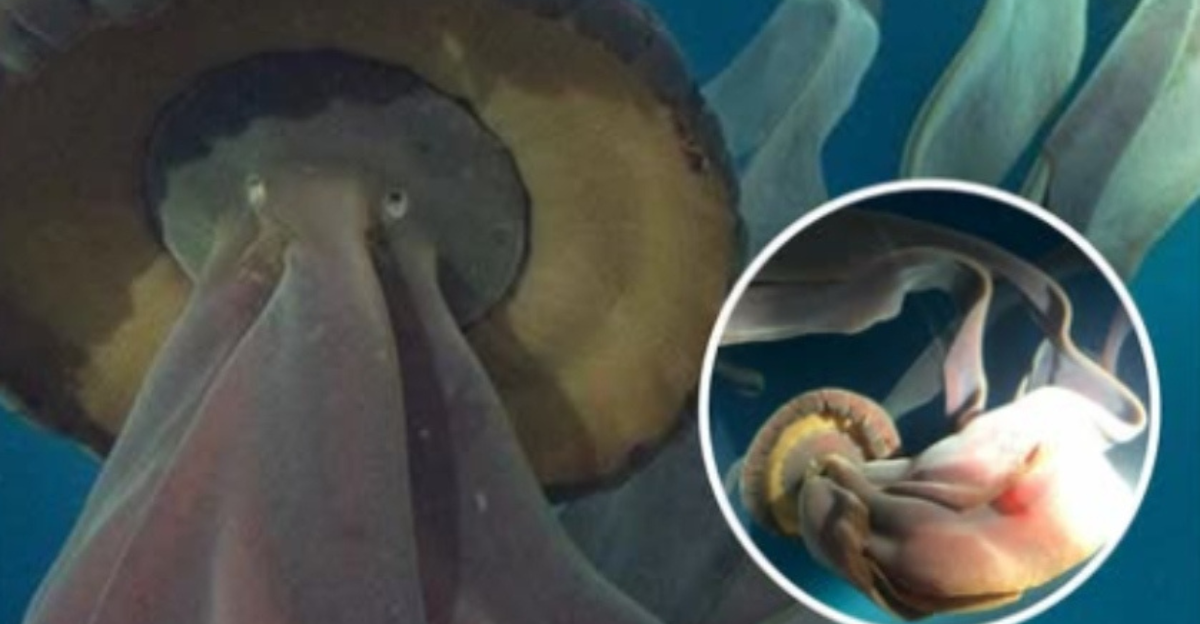
The giant phantom jellyfish has been spotted in all the world’s oceans except the Arctic, yet it remains one of the ocean’s most elusive inhabitants. Its preference for deep waters, ranging from a few thousand feet to nearly 22,000 feet (6,700 meters), makes encounters exceedingly rare. In fact, since the first recorded sighting in 1899, scientists have logged only a little over a hundred confirmed observations.
Out Of This World
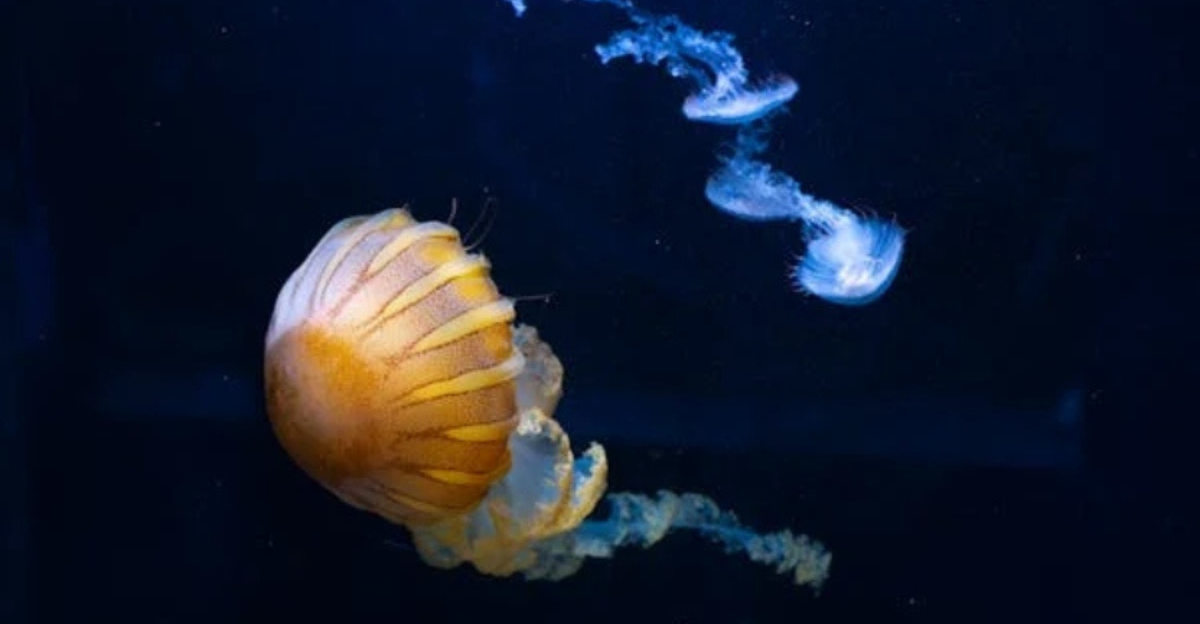
Despite its ghostly appearance, the giant phantom jellyfish is a formidable predator in the deep-sea ecosystem. Its massive bell and trailing oral arms create an imposing figure as it navigates the dark oceanic depths. These ribbon-like arms, devoid of stingers, are specialized for capturing prey, sensing and ensnaring organisms in the pitch-black environment before delivering them to the jellyfish’s central mouth.
A Unique Mode of Reproduction
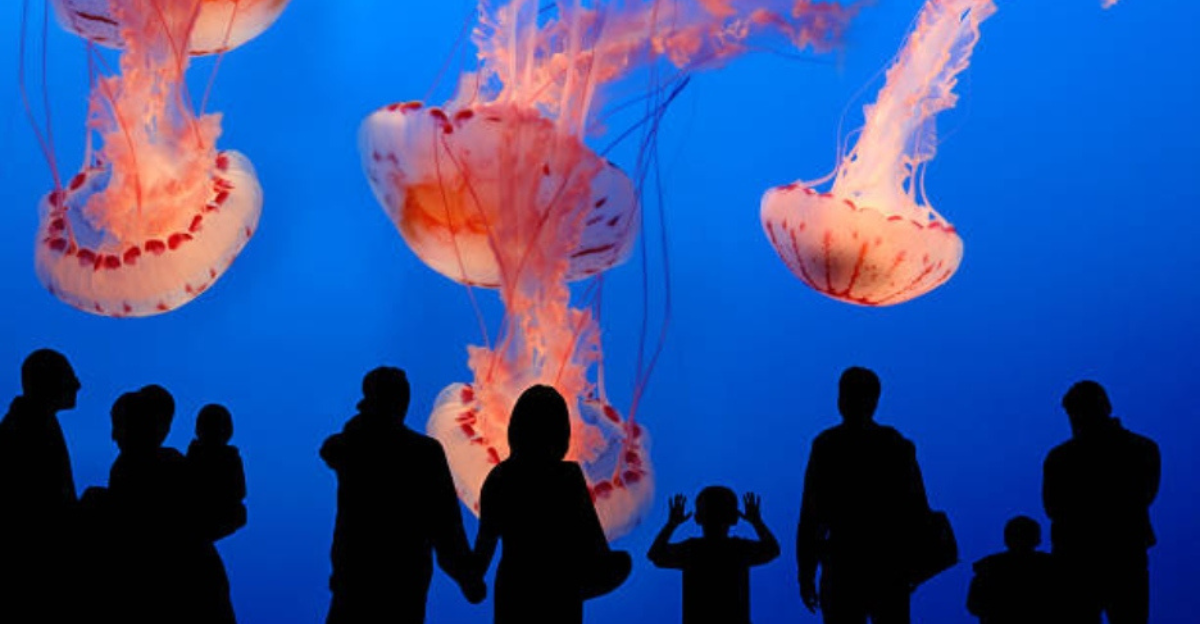
Among the most intriguing aspects of the giant phantom jellyfish is its reproductive strategy. Unlike many jellyfish species that reproduce through external fertilization, Stygiomedusa gigantea is viviparous, giving birth to live young. The offspring develop within the mother’s bell, eventually exiting through her mouth to begin life independently. This method of reproduction is exceptionally rare among jellyfish and adds to the species’ enigmatic allure.
One Of Its Kind
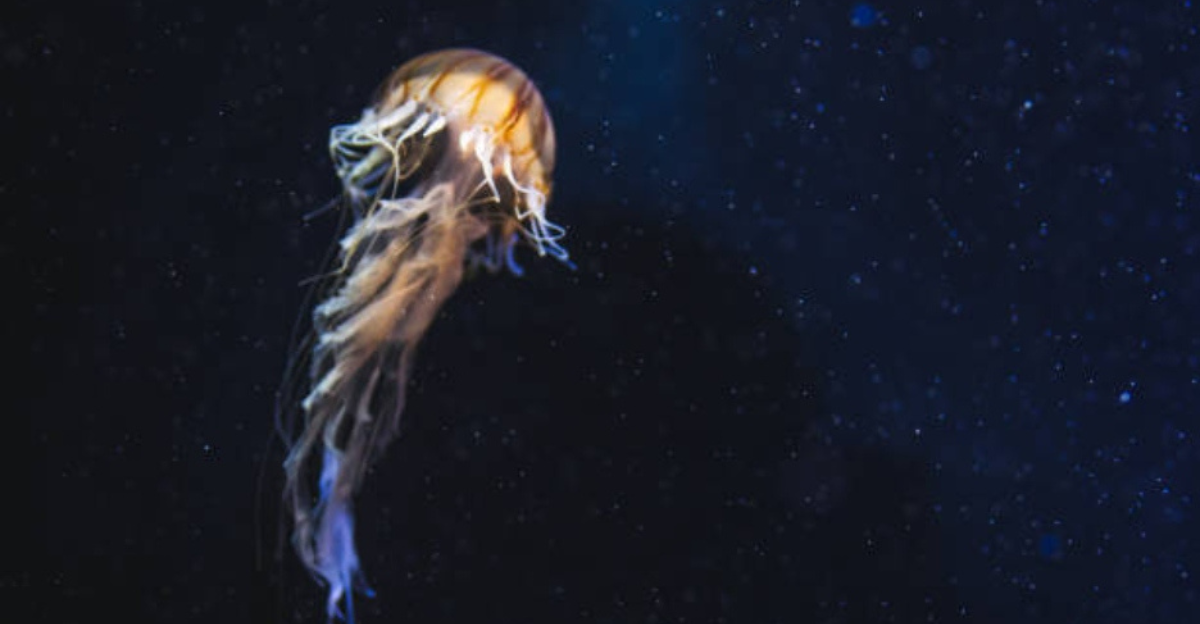
This viviparous reproduction raises numerous questions about the life cycle and development of the giant phantom jellyfish. How long do the young remain within the mother? What factors trigger their release? These are just a few of the mysteries that scientists are eager to unravel as they continue to study this elusive creature.
Shallow Water Sightings in Antarctica
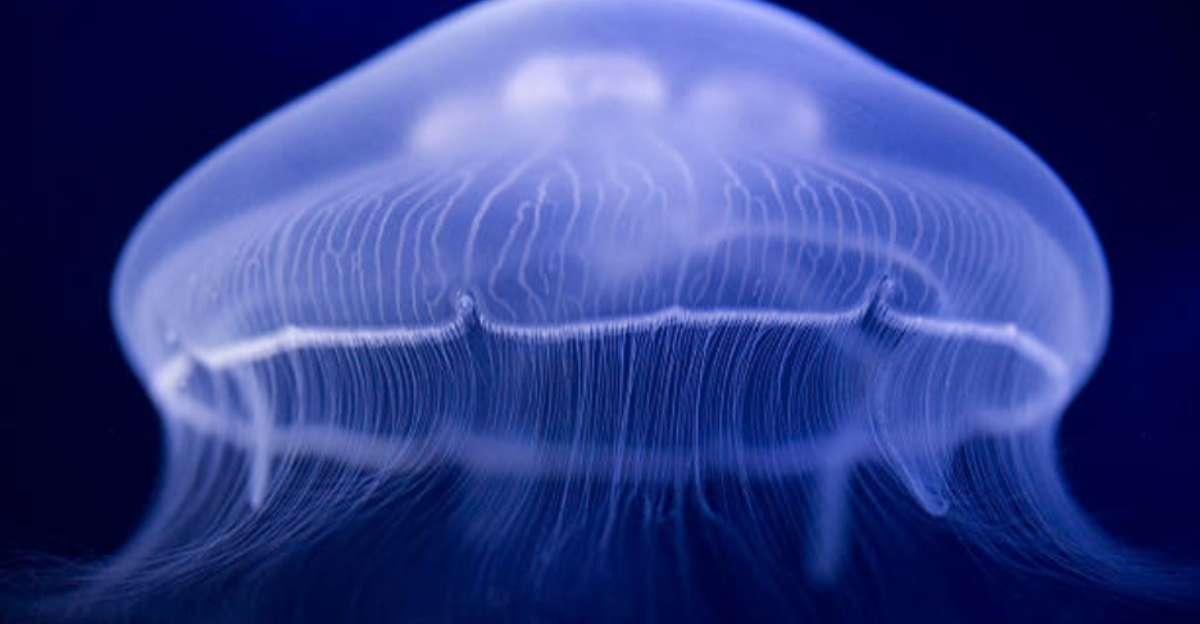
The 2022 Antarctic sightings of the giant phantom jellyfish were particularly surprising due to the relatively shallow depths at which the creatures were observed. Typically found in much deeper waters, their presence between 260 and 920 feet (80 to 280 meters) suggests a potential shift in behavior or habitat preference. Researchers speculate that seasonal variations in sunlight may drive prey closer to the surface in high southern latitudes, prompting the jellies to follow.
Breeding In The Deep
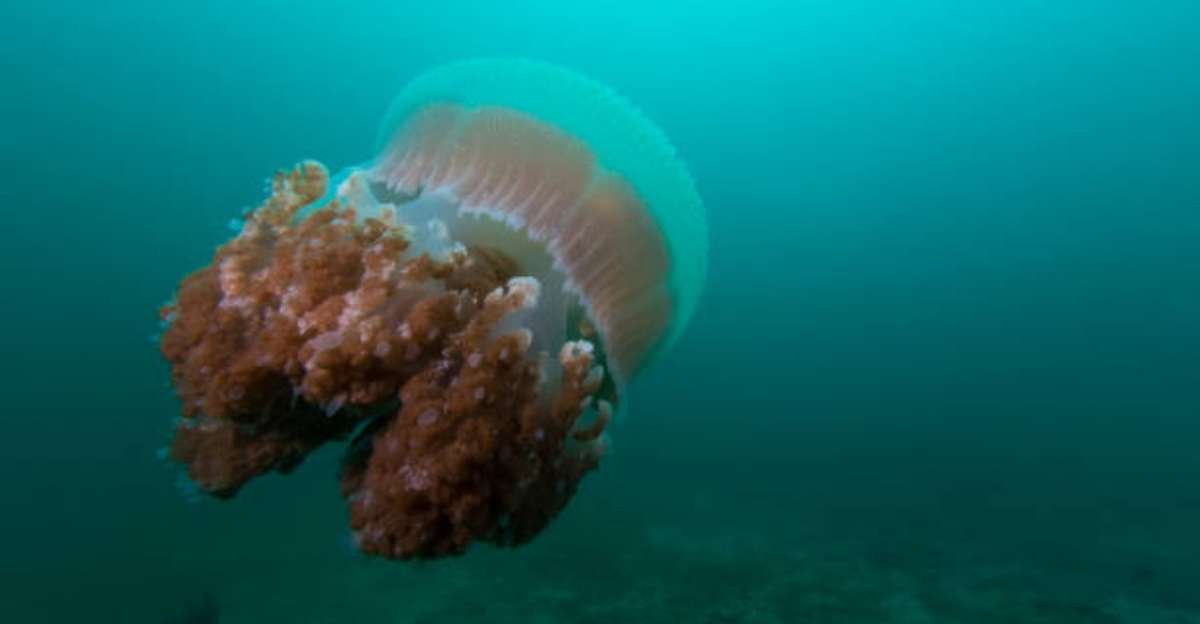
These observations have significant implications for our understanding of the species’ ecology. They suggest that the giant phantom jellyfish may be more adaptable than previously thought, capable of adjusting its habitat range in response to environmental changes. This adaptability could be a key factor in its survival in the dynamic and often harsh conditions of the deep sea.
Challenges in Studying the Phantom

Studying the giant phantom jellyfish presents numerous challenges. Its deep-sea habitat makes it difficult to observe directly, and its elusive nature means that encounters are rare. Advanced technologies, such as remotely operated vehicles (ROVs) and submersibles, have been instrumental in recent discoveries, allowing scientists to explore depths that were previously inaccessible. However, even with these technologies, capturing detailed information about the jellyfish’s behavior, diet, and reproduction remains a formidable task. Each new sighting provides valuable data, but also highlights the vast gaps in our knowledge about this mysterious creature.
The Importance of Deep-Sea Research
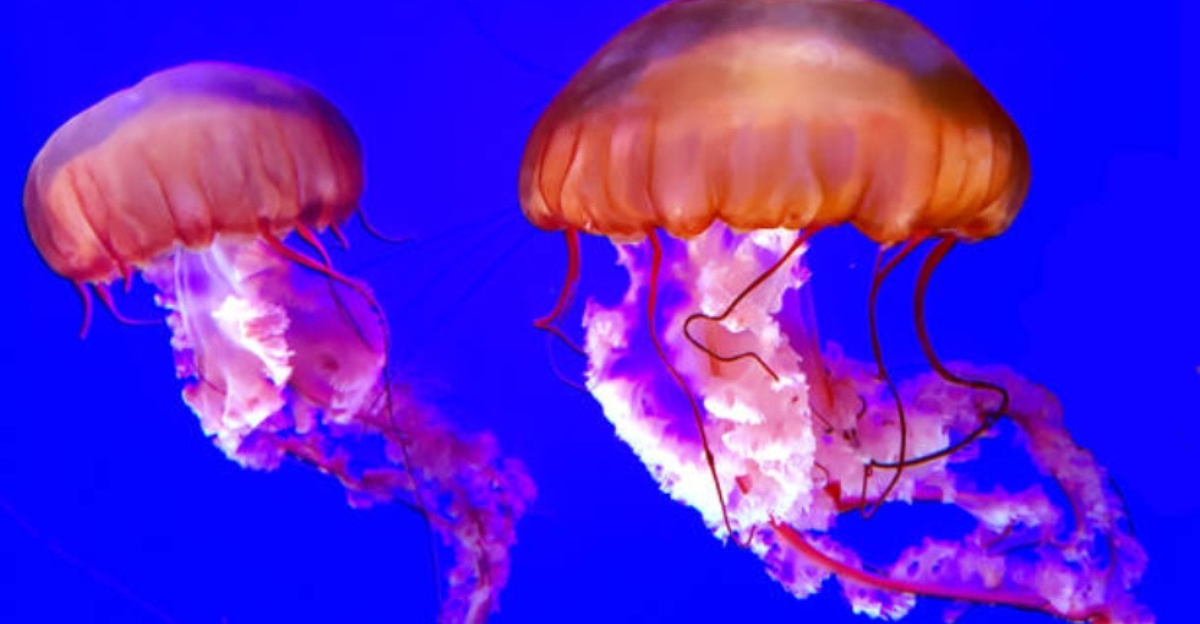
The study of creatures like the giant phantom jellyfish underscores the importance of deep-sea research. The deep ocean is the largest habitat on Earth, yet it remains one of the least understood. Discoveries of rare species and unique behaviors not only satisfy human curiosity but also enhance our understanding of biodiversity and the complex interactions within marine ecosystems.
What We Learn From The Arctic Ocean
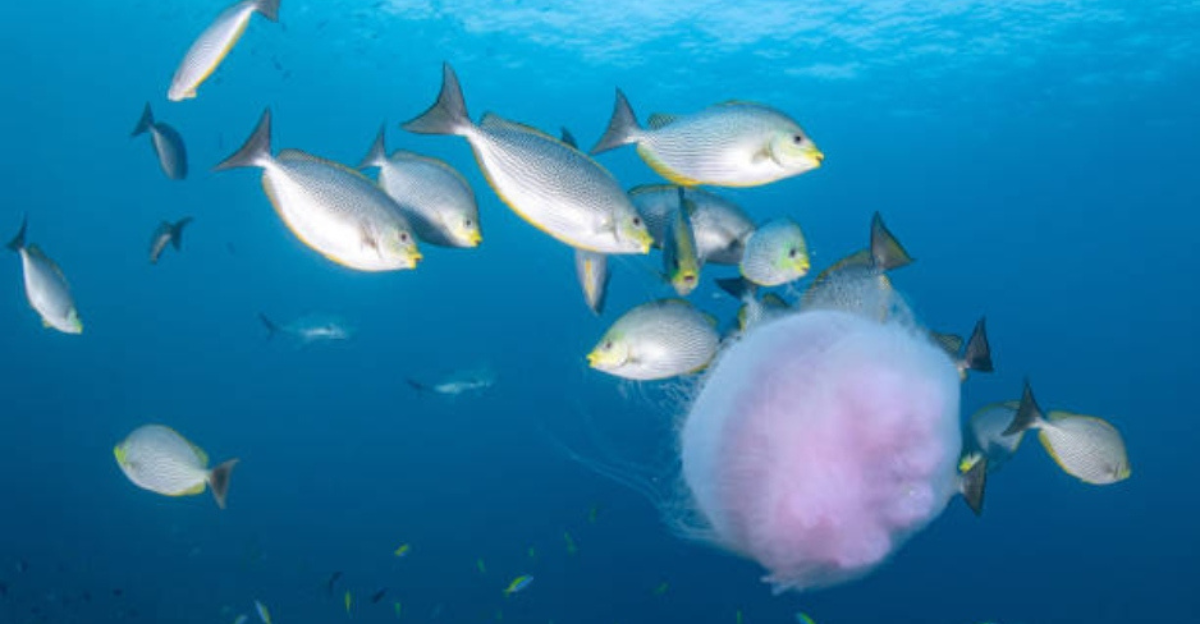
Furthermore, deep-sea research has practical implications. Insights gained from studying deep-sea organisms can inform conservation efforts, guide sustainable resource management, and even inspire technological innovations. As we continue to explore the depths, who knows what other marvels await discovery?
Conservation and Future Research
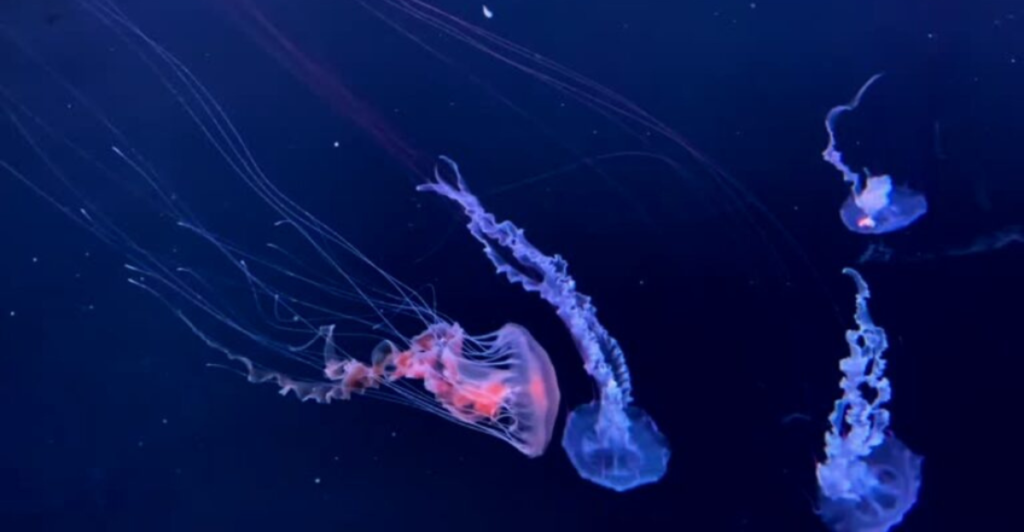
The rarity of sightings of the giant phantom jellyfish highlights the need for continued exploration and conservation of deep-sea ecosystems. Protecting these habitats is crucial for preserving the biodiversity they support and ensuring that species like Stygiomedusa gigantea continue to thrive.
Will We See It Again?
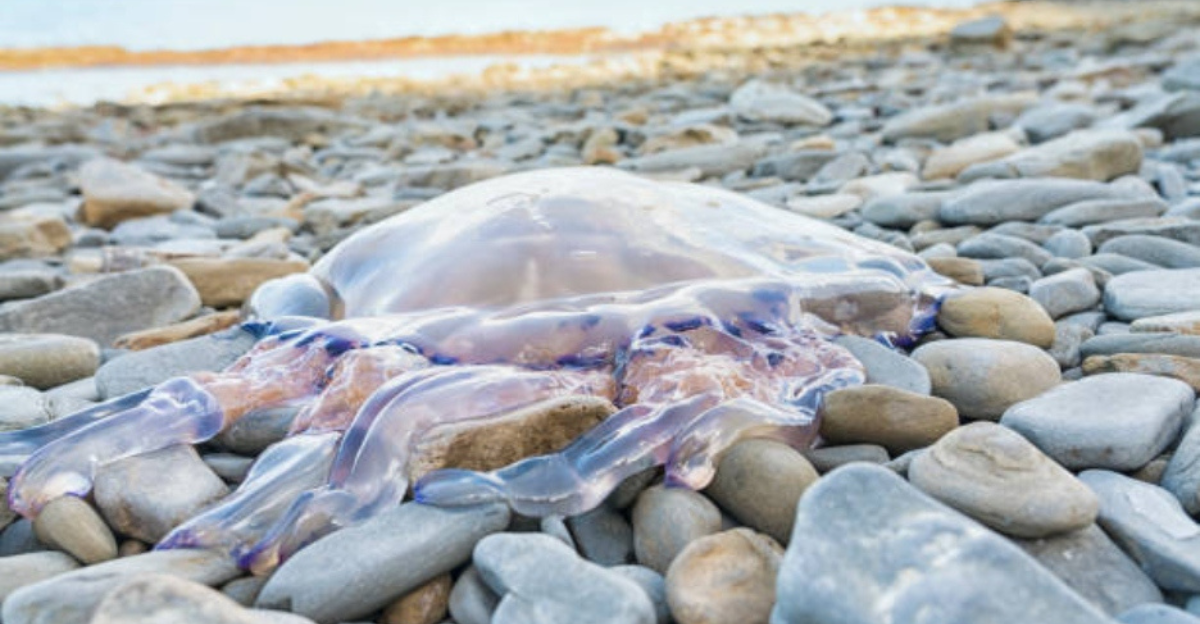
Future research efforts will focus on understanding the life history, ecological role, and population dynamics of the giant phantom jellyfish. By unraveling the mysteries of this elusive creature, scientists hope to gain broader insights into the functioning of deep-sea ecosystems and the adaptations that enable life in one of Earth’s most extreme environments. The giant phantom jellyfish stands as a testament to the wonders that lie beneath the ocean’s surface. Its elusive nature, unique reproductive strategy, and adaptability to varying depths make it a subject of endless fascination.
Discover more of our trending stories and follow us to keep them appearing in your feed

12 Facts About the Devil Frog
The 10 Most Poisonous Frogs in the World
The War on Cows Is Over—And Green Extremists Have Lost
Lake Shasta’s Remarkable Comeback From Drought Captured in Stunning Images
References:
Reference 1
Reference 2
This article first appeared here
Stay connected with us for more stories like this! Follow us to get the latest updates or hit the Follow button at the top of this article, and let us know what you think by leaving your feedback below. We’d love to hear from you!







